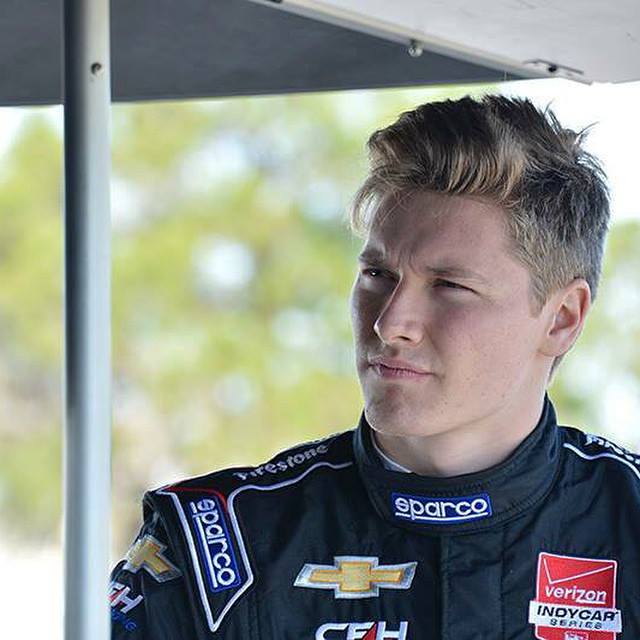CP MOTORSPORTS - MEDIA MAKE MOUNTAIN OF MOLEHILL AT INDIANAPOLIS?

Three scary-looking accidents in preparation for the Indianapolis 500 and a fourth that was as ugly as it appeared seem to have pushed the panic button among the media. At least that’s what some of the 33 drivers at the Indianapolis Motor Speedway contend.
Team co-owner and driver Ed Carpenter, one of the three who got airborne before qualifying 12th last week, said he was weary of the hashing and rehashing of the incidents. He said, “It’s being blown out of proportion a little bit” and said outright, “It’s getting tiring talking about it.”
He said, “For us driver, we understand what we do. We understand the consequences. We understand the risks. We’re still here. Anybody that isn’t OK with that, they’re free to go do something else or move on. I love what I do, especially with this race, and that’s what I’m focused on.”
Tony Kanaan, the 2013 winner of this race and inside Row 2 qualifier, wasn’t critical specifically of the media and the coverage, but he drove home the point that “every time we hop in that race car, we don’t know if we’re going to come out of it, if you’re going to come out of it in one piece, if something’s going to happen to you. That’s what makes us different than other people. That’s why not everybody can do this. This is the sport that we chose. And I believe – not trying to be rude to anyone in the field – but if people feel uncomfortable with that, you shouldn’t be in the race car. We’re wired different, and we have less screws in our head. That’s what makes us who we are. I’m going to keep repeating myself: This is the way that we are.”
He said, “I understand that when we crash, sometimes we have the risk to flip. Am I willing to take that risk? One hundred percent. Accidents happen. We hate them, but it’s part of our job. We’re always going to have concerns. And when people crash, anything can happen. I think they were four completely different accidents. I trust the engineers. I trust the guys who built both aero kits [Chevrolet and Honda].”

Josef Newgarden, who started Sunday from the outside of Row 3 and walked away from one of the early incidents, said the media “probably” have overplayed and over-analyzed the spate of accidents. However, he found a positive among it all.
“I think there’s been unnecessary drama from it,” he said, “but the drama seems to create good attention. It certainly seems there’s a lot of people interested in IndyCar racing. More so than there was before. So it’s probably not a bad thing.”
He spoke as though accidents are a cost of doing business, that the past has seen plenty of them.
“We always have wrecks here at the Indianapolis Motor Speedway. It’s not like we don’t have wrecks,” Newgarden said. “It seems like people are up in arms that we’re having wrecks in general. I know it’s more the way the cars are wrecking. But the way it’s been spun is ‘Oh!! Cars are wrecking at the Indianapolis Motor Speedway!!’ Cars are always going to wreck.”
Derrick Walker is the Verizon IndyCar Series’ President of Competition and Operations. He called it a “complex” set of circumstances and reminded that the three crashes prior to James Hinchcliffe’s serious-injury wreck “all started in different ways. We had one that had a tire-pressure issue. We had another one that had an aero-balance issue – the car was set probably a little too far one way and it caused a spin. Carpenter’s, the one that prompted officials to force the drivers into race trim for qualifying, was “just an accident,” Walker said.
The first three wild wrecks happened to Chevrolets; Hinchcliffe was driving a Honda. But Walker said, “We’re talking about safety. It’s not about one manufacturer versus the other. I think you have to accept the fact that just because we’ve had three incidents and they could be coincidentally involved with one manufacturer, it doesn’t necessarily follow that it’s only that manufacturer’s problem.” (To clarify, he said that two days before Hinchcliffe’s wreck.)
“If Chevy was getting blamed for anything, it’s unnecessary. I don’t think Chevy has done anything wrong,” Newgarden said. “I don’t think Chevy’s put us in a bad position at all. I feel confident in Chevrolet and what they’ve given us as a product.”
Ryan Briscoe, who found himself slipping out of the sports-car world for a week or so and into Hinchcliffe’s seat for this race, made a strong supporting point for his complaint that “the media have really been putting quite a negative spin on it.”
He said when he followed the activities at Indianapolis as a non-participant this month that “you wouldn’t get daily reports of who’s fast. You just get daily reports of who crashed.
“You have to stop and look into the details of all of them [accidents],” Briscoe said. “Newgarden crashed because head a tire going flat. Helio, I heard they completely missed on the aero balance. There were mistakes made. And Hinch’s deal, a mechanical part broke.”
Perhaps because his wife, Nicole Manske Briscoe, is an ESPN Sports Center anchor, the racer cut the media some slack. In fairness to the press, he recognized that “everyone who spun had an airborne situation, and that definitely makes it worse. And it IS real. It’s happening.”
Once again, it appears to be a matter of agendas. Drivers downplay accidents. The media play them up. The only way to resolve the issue is to eliminate crashes. And as Newgarden suggested, that isn’t likely to happen.




